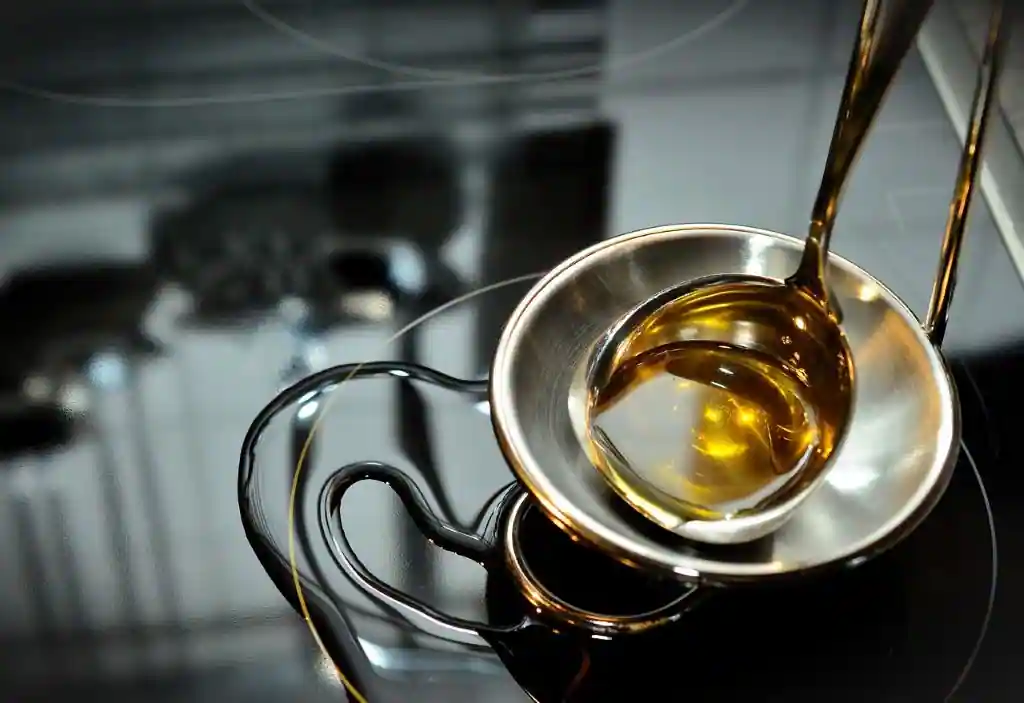In this article, you will discover the fascinating array of cooking pots available to enhance your culinary adventures. From versatile stainless steel pots that distribute heat evenly, to lightweight and durable aluminum pots, each type has its own unique qualities that can elevate your cooking experience. We will explore the benefits of non-stick pots for effortless cooking and cleaning, as well as the charm of traditional cast iron pots for slow-cooked perfection. Whether you’re a beginner or a seasoned chef, understanding the different types of cooking pots will undoubtedly inspire you to experiment and create delicious dishes with confidence. So, let us explore the wide world of cooking pots together!
1. Stainless Steel Pots
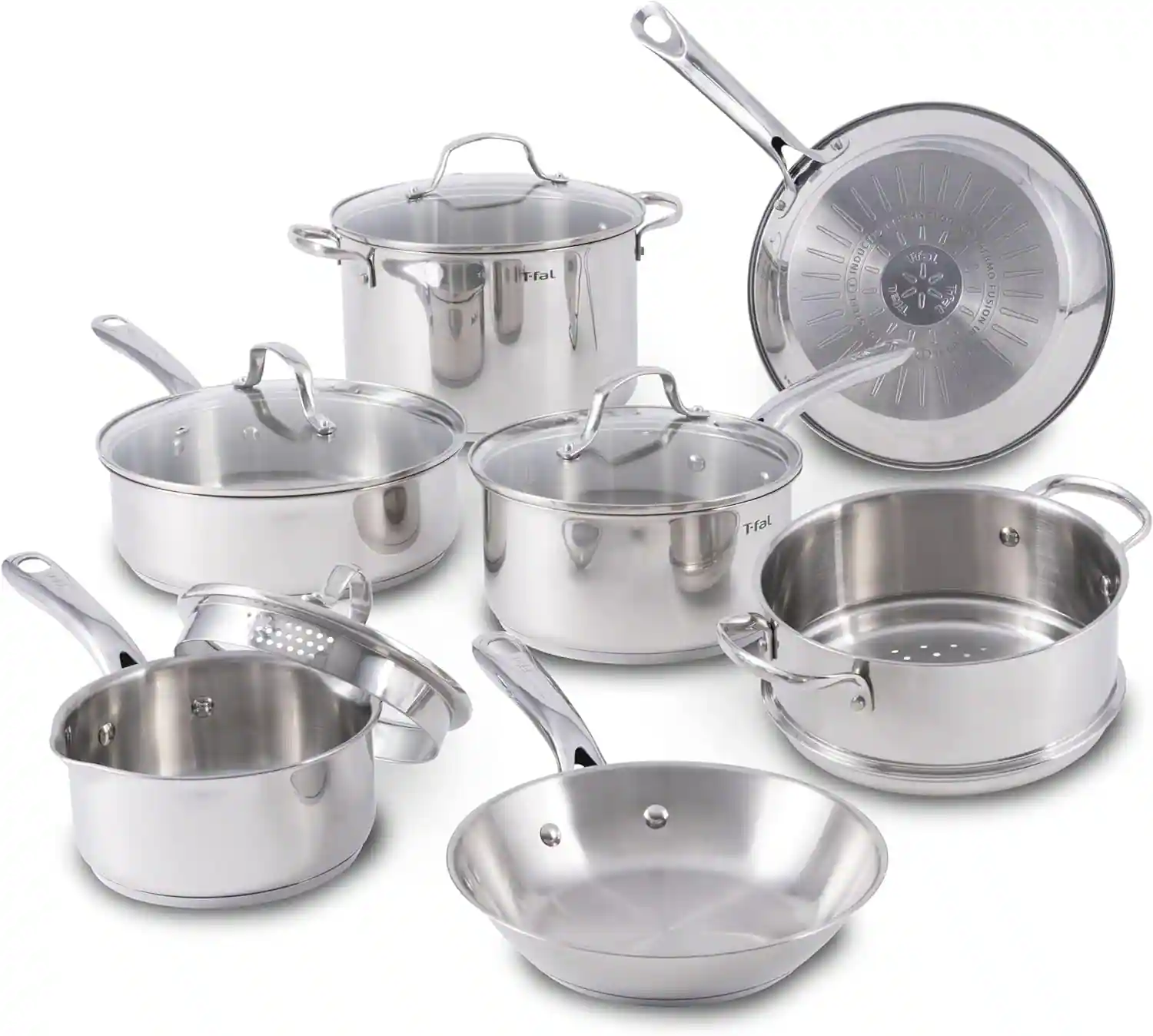
1.1 Advantages of Stainless Steel Types of Cooking Pots
Stainless stell pots are a popular choice among home cooks and professional chefs alike. One of the biggest advantages of these types of cooking pots is their durability. They are resistant to scratches, dents, and rust, making them a long-lasting option for your kitchen. Additionally, stainless steel pots distribute heat evenly, allowing for efficient cooking and preventing hot spots.
Another advantage of stainless steel pots is their versatility. They can be used on various stovetops, including induction, gas, electric, and glass. This is because stainless steel is a non-reactive material, meaning it won’t interact with the food you’re cooking. It also doesn’t retain odors or flavors from previous meals, making it great for cooking a variety of dishes without any unwanted aftertastes.
Cleaning stainless steel pots is also a breeze. They are dishwasher safe, but can also be easily washed by hand with warm soapy water. Stainless steel is non-porous, which means it doesn’t absorb food particles or stains, making it hygienic and easy to maintain.
1.2 Disadvantages of Stainless Steel Pots
While stainless steel pots have many advantages, there are a few disadvantages to consider. One is that stainless steel is not a great conductor of heat on its own. This means that stainless steel pots may take longer to heat up compared to pots made of other materials, such as copper or aluminum. However, once they do heat up, they retain the heat well.
Another drawback of stainless steel pots is that they can be quite heavy. This may not be an issue for everyone, but it can be a concern for those with limited strength or mobility. However, many stainless steel pots now come with ergonomic handles that make them easier to handle and maneuver.
Additionally, stainless steel pots can be more expensive compared to other materials. However, the durability and longevity of stainless steel make it a worthwhile investment in the long run.
2. Non-Stick Pots

2.1 Advantages of Non-Stick Types of Cooking Pots
Non-Stick pots are a popular choice for those who want to minimize the use of oil or butter in their cooking. One of the main advantages of these types of cooking pots is that they make cooking and cleaning up a breeze. The non-stick coating prevents food from sticking to the surface, making it easier to flip and remove food without it breaking apart or leaving a mess behind. This also means that you can cook with less oil, making your meals healthier.
Another advantage of non-stick pots is that they require less heat to cook your food. The non-stick coating conducts heat more efficiently than other materials, ensuring that your food cooks evenly without any hot spots. This can also help save energy and reduce cooking time.
Non-stick pots are also lightweight, making them easy to handle and maneuver. Their smooth surface allows for quick and effortless cleaning, as most food residue can be easily wiped away with a sponge or cloth.
2.2 Disadvantages of Non-Stick Pots
One of the main disadvantages of non-stick pots is their limited lifespan. The non-stick coating can wear off over time, especially if not properly cared for or used with metal utensils. Once the coating starts to deteriorate, the pot may no longer be non-stick and may need to be replaced.
Another disadvantage is that non-stick pots are not suitable for high-temperature cooking. The non-stick coating can release toxic fumes when exposed to high heat, which can be harmful to your health. It is important to use non-stick pots within their recommended temperature range to avoid any potential risks.
Furthermore, non-stick pots may not be as durable as other materials. The coating can scratch or peel, especially when using metal utensils or abrasive cleaning tools. It is essential to use wooden or silicone utensils and gentle cleaning methods to prolong the lifespan of your non-stick pots.
3. Cast Iron Pots
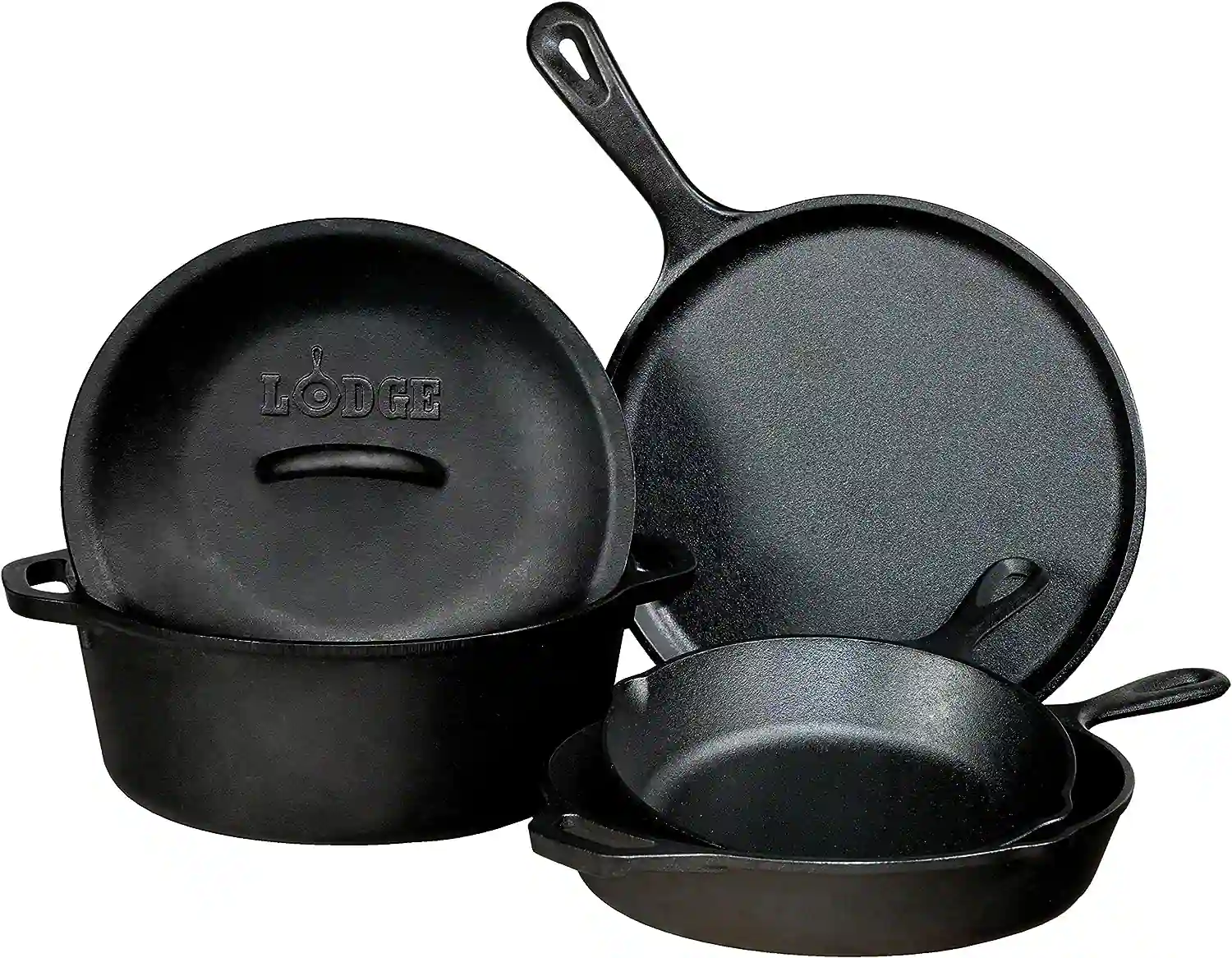
3.1 Advantages of Cast Iron Types of Cooking Pots
Cast Iron pots have been used for cooking for centuries, and for good reason. One of the main advantages of these types of cooking pots is their excellent heat retention. These pots heat up slowly but retain heat for a long time, making them ideal for slow-cooking and simmering dishes. Cast iron pots also distribute heat evenly, ensuring that your food cooks thoroughly and uniformly.
Another advantage of cast iron pots is their versatility. They can be used on various stovetops, including gas, electric, and induction. They can also be used in the oven, making them suitable for a wide range of cooking methods. Cast iron pots are perfect for searing, frying, baking, and even making stews and soups.
Cast iron pots are also incredibly durable and can last for generations if properly cared for. They are resistant to scratches, chipping, and warping, making them a long-term investment for your kitchen. Additionally, cooking with cast iron pots can also add a small amount of iron to your food, which is beneficial for individuals with iron deficiencies.
3.2 Disadvantages of Cast Iron Pots
One of the main disadvantages of cast iron pots is their weight. They can be quite heavy, especially when filled with food. This may make them challenging to handle, especially for those with limited strength or mobility. However, the weight of cast iron pots also contributes to their excellent heat retention.
Another disadvantage is that cast iron pots require regular maintenance to prevent rusting. Unlike other materials, such as stainless steel, cast iron is prone to rust if not properly seasoned and cared for. Seasoning involves applying a layer of oil to the surface of the pot to create a protective barrier against moisture. It is essential to clean and dry cast iron pots thoroughly after each use to prevent rust formation.
Additionally, cast iron pots can react with acidic foods, such as tomatoes or vinegar, which can affect the taste and quality of the dish. It is recommended to avoid cooking highly acidic foods in cast iron pots or to use a well-seasoned pot to minimize any interactions.
4. Aluminum Pots
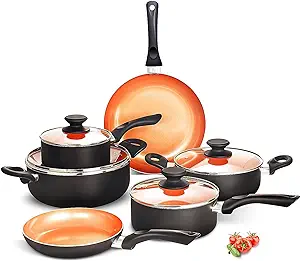
4.1 Advantages of Aluminum Types of Cooking Pots
Aluminum pots are lightweight and excellent heat conductors, making them a popular choice among professional chefs. One of the main advantages of these types of cooking pots is their ability to heat up quickly and distribute heat evenly. This means that your food will cook more efficiently and uniformly, reducing the risk of burning or undercooking.
Another advantage of aluminum pots is their affordability. Aluminum is a relatively inexpensive material, making aluminum pots an affordable option for those on a budget. Despite their affordability, aluminum pots are still durable and long-lasting.
Furthermore, aluminum pots are highly resistant to corrosion, stains, and warping, making them low-maintenance and easy to clean. They can be washed in the dishwasher or by hand with ease. Many aluminum pots also come with non-stick coatings, providing additional convenience and making them even easier to clean.
4.2 Disadvantages of Aluminum Pots
One of the main concerns with aluminum pots is their potential reactivity with certain foods, especially those with acidic ingredients. Aluminum can react with acidic foods, causing a metallic taste in the dish and potentially leaching small amounts of aluminum into the food. However, most aluminum pots now come with a protective layer or coating that prevents direct contact between the food and the aluminum, minimizing any potential risks.
Another disadvantage of aluminum pots is that they can easily scratch or dent. Avoid using metal utensils or abrasive cleaning tools, as they can damage the surface of the pot. It is best to use wooden or silicone utensils and gentle cleaning methods to preserve the integrity of the pot.
Additionally, aluminum pots may not be suitable for induction stovetops unless they have a magnetized steel base. Aluminum is not a magnetic material and cannot generate heat on induction cooktops on its own. However, many aluminum pots available in the market now come with a steel or stainless steel base that allows them to be used on induction stovetops.
5. Copper Pots
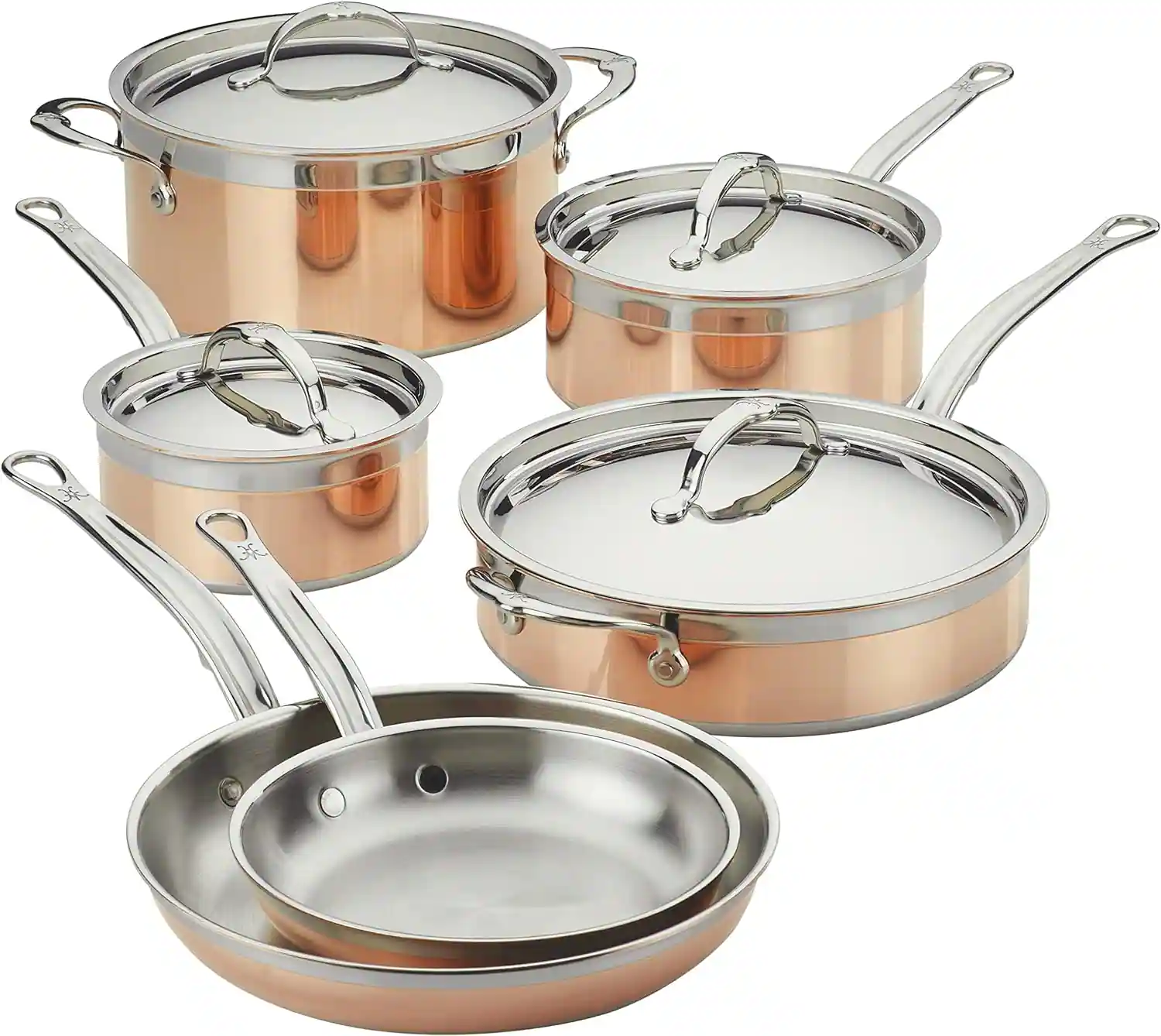
5.1 Advantages of Copper Types of Cooking Pots
Copper pots are widely regarded as the ultimate cookware for professional chefs due to their exceptional heat conductivity. One of the main advantages of these types of cooking pots is their ability to quickly and evenly distribute heat. This allows for precise cooking control and the prevention of hot spots. With copper pots, you can achieve optimal cooking results consistently.
Another advantage of copper pots is their aesthetic appeal. Copper is a beautiful metal, and copper pots can add an elegant touch to any kitchen. They can be displayed as part of your kitchen decor when not in use, enhancing the overall ambiance.
Furthermore, copper pots are highly responsive to changes in temperature, allowing for precise adjustments during the cooking process. They heat up quickly and cool down rapidly, making them ideal for delicate tasks like caramelization or reduction. Copper pots also provide excellent control over heat, allowing for accurate and efficient cooking.
5.2 Disadvantages of Copper Pots
One of the main disadvantages of copper pots is their high cost. Copper is an expensive material, which translates to a higher price tag for copper pots compared to pots made of other materials. However, the durability and performance of copper pots can make them a worthwhile investment for serious cooks.
Another disadvantage of copper pots is their reactivity with certain foods. Copper can react with acidic ingredients, such as vinegar and tomato-based sauces, potentially leaching small amounts of copper into the food. While this is generally not harmful, some people may prefer to avoid cooking highly acidic foods in copper pots or use copper pots with a protective lining, such as stainless steel or tin.
Additionally, copper pots require regular maintenance to keep them in excellent condition. They need to be polished regularly to maintain their shine and prevent tarnishing. Copper also requires occasional retinning, especially if the lining wears off and exposes the copper surface. It is important to follow proper care instructions to ensure the longevity and performance of your copper pots.
6. Ceramic Pots

6.1 Advantages of Ceramic Types of Cooking Pots
Ceramic pots are a popular choice for those who prefer cooking with natural materials. One of the main advantages of these types of cooking pots is their ability to distribute heat evenly. They retain heat well and provide a gentle and consistent heat source, allowing for even cooking without hot spots.
Another advantage of ceramic pots is their non-reactive nature. They are free from harmful chemicals like PFOA, PFOS, and PTFE, which are commonly found in non-stick coatings. This makes ceramic pots a safer option for those concerned about potential health risks. Ceramic pots also do not alter the taste or smell of the food, allowing you to enjoy the natural flavors of your ingredients.
Ceramic pots are also aesthetically pleasing. They come in various colors and designs, adding a touch of elegance and style to your kitchen. They can be used for serving food directly to the table, enhancing the visual appeal of your meals.
6.2 Disadvantages of Ceramic Pots
One of the main disadvantages of ceramic pots is their fragility. Ceramic is a delicate material that can chip or crack if mishandled or dropped. It is essential to handle ceramic pots with care to prevent any damage. However, many ceramic pots now come with a protective coating or design that enhances their durability.
Another disadvantage of ceramic pots is their limited heat resistance. Not all ceramic pots are suitable for high-temperature cooking or broiling. It is important to check the manufacturer’s instructions to ensure that your ceramic pot can withstand the desired cooking temperature.
Ceramic pots may also require specific cleaning methods. Some ceramic pots are not dishwasher safe and need to be hand washed with gentle dish soap and a non-abrasive sponge or cloth. Additionally, certain foods, such as heavily pigmented spices or acidic ingredients, may cause staining or discoloration on the surface of the pot. Regular cleaning and maintenance can help minimize any stains.
7. Glass Pots

7.1 Advantages of Glass Types of Cooking Pots
These types of cooking pots are a popular choice for those who prefer a transparent cooking experience. One of the main advantages of glass pots is their ability to withstand extreme temperature changes. They can be safely used on the stovetop, in the oven, and even in the freezer. Glass pots are also microwave safe, allowing for convenient reheating or cooking of leftovers.
Another advantage of glass pots is their non-reactive nature. They do not leach any harmful chemicals into your food, ensuring that the flavors of your dishes remain unaffected. This makes glass pots an excellent choice for those with health concerns.
Glass pots are also easy to clean. They are dishwasher safe, and most food residue can be easily removed with a gentle scrub or soak. The transparency of glass also allows for easy monitoring of your cooking progress without constantly lifting the lid.
7.2 Disadvantages of Glass Pots
One of the main disadvantages of glass pots is their fragility. Glass can be easily chipped, cracked, or shattered if dropped or mishandled. It is important to handle glass pots with care to prevent any accidents. Additionally, extreme temperature changes, such as transferring a hot glass pot directly into cold water, can cause the glass to shatter.
Another disadvantage of glass pots is their poor heat distribution. Glass is not as efficient at conducting heat as other materials, such as stainless steel or copper. This means that glass pots may have hot spots or uneven cooking, requiring more frequent stirring or adjustment of heat.
Furthermore, glass pots may not be suitable for all stovetops, especially induction cooktops. Most glass pots require direct contact with a heat source, such as an open flame or electric coil, for proper cooking. It is important to check the manufacturer’s instructions or labels to ensure compatibility with your stovetop.
8. Enamel Pots
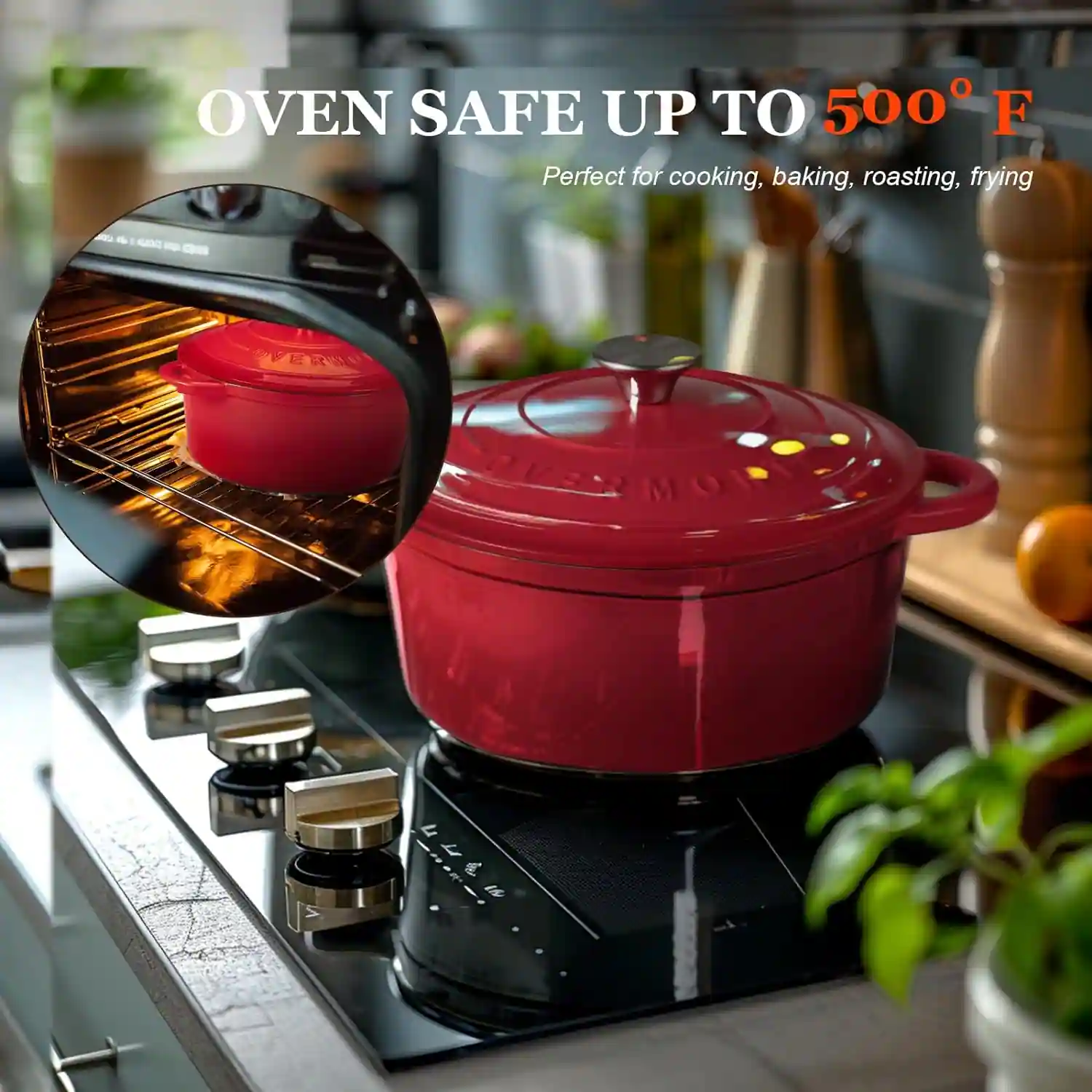
8.1 Advantages of Enamel Types of Cooking Pots
These types of cooking pots are characterized by their beautiful colored or white exterior and smooth, glossy finish. One of the main advantages of enamel pots is their excellent heat retention. They heat up quickly and distribute heat evenly, ensuring that your food cooks thoroughly and efficiently.
Another advantage of enamel pots is their non-reactive nature. The enamel coating prevents interactions between the pot and the food, making it ideal for cooking a wide range of dishes. Enamel pots also do not absorb flavors or odors, allowing for versatile and odor-free cooking.
Enamel pots are also highly durable and can withstand high temperatures. They are resistant to chipping, cracking, and rust, making them a long-lasting option for your kitchen. Additionally, enamel pots are easy to clean. They can be hand washed with warm water and gentle dish soap or placed in the dishwasher for convenient cleaning.
8.2 Disadvantages of Enamel Pots
One of the main disadvantages of enamel pots is their fragility. The enamel coating can chip or crack if mishandled or exposed to extreme temperature changes. It is important to handle enamel pots with care and avoid using metal utensils or abrasive cleaning tools that can damage the surface.
Another disadvantage is that enamel pots may not be suitable for high-temperature cooking. The enamel coating can start to deteriorate or discolor if exposed to extreme heat or overheating. It is recommended to use enamel pots within their recommended temperature range to maintain their integrity.
Enamel pots are also relatively heavy, especially when compared to other materials like aluminum or stainless steel. This may make them challenging to handle, especially when filled with food. However, many enamel pots now come with ergonomic handles that make them easier to maneuver.
9. Clay Pots
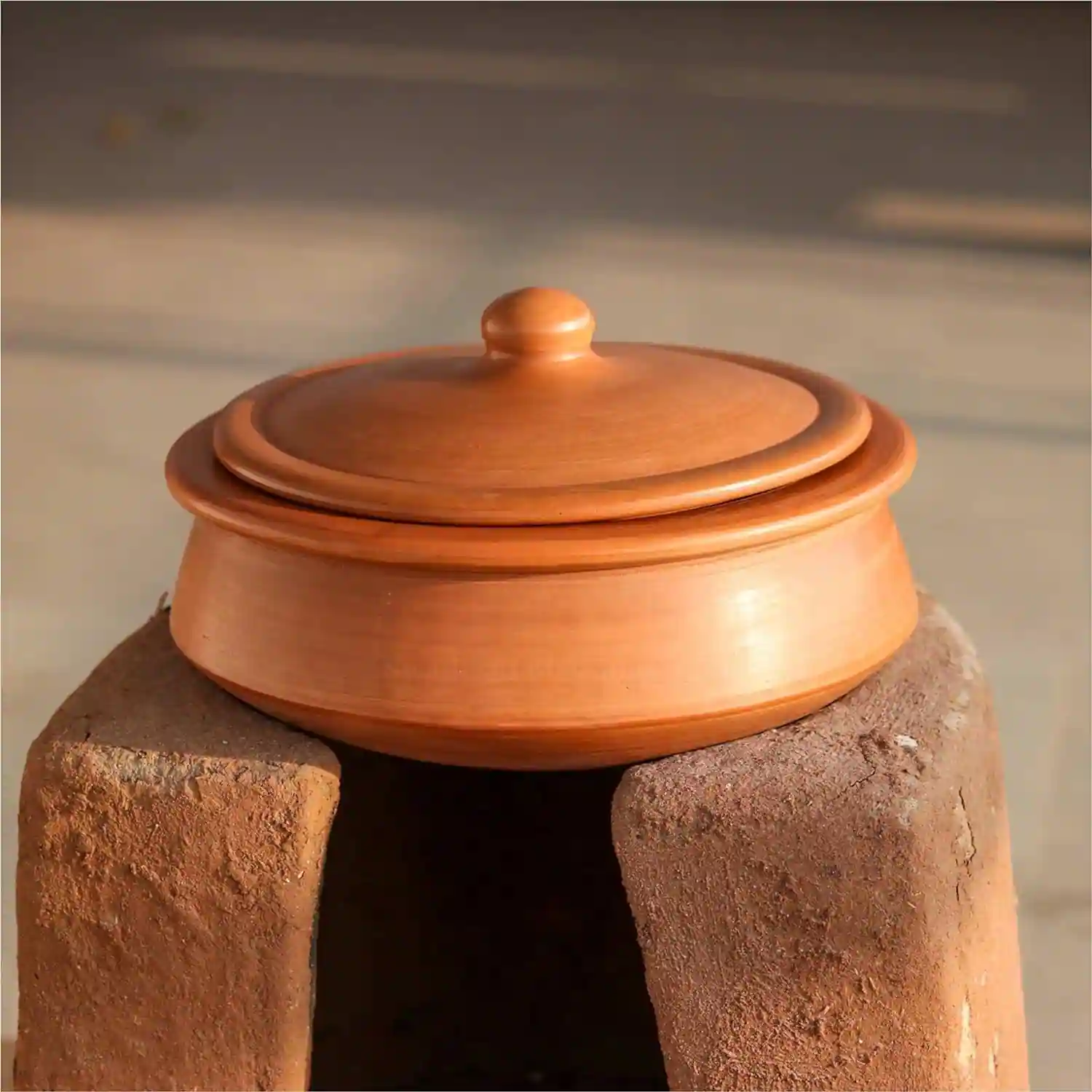
9.1 Advantages of Clay Types of Cooking Pots
These types of cooking pots, also known as earthenware or terracotta pots, have been used for centuries in various cuisines around the world. One of the main advantages of clay pots is their ability to retain moisture. The porous nature of clay allows for natural evaporation during cooking, resulting in moist and tender dishes. Clay pots are often used for slow-cooking methods like braising, roasting, or stewing.
Another advantage of clay pots is their ability to enhance the flavors of your dishes. The clay imparts a subtle earthy aroma and flavor to the food, adding a unique depth and richness. The flavors intensify and develop as the dish simmers over low heat, resulting in delicious and authentic flavors that are hard to replicate with other materials.
Clay pots are also aesthetically appealing. They have a rustic and organic charm that can elevate the presentation of your dishes. They can be used for serving food directly to the table, adding an element of tradition and authenticity to your meals.
9.2 Disadvantages of Clay Pots
One of the main disadvantages of clay pots is their fragility. Clay pots can be quite delicate and prone to cracking or breaking if mishandled or exposed to extreme temperature changes. It is important to handle clay pots with care and avoid sudden temperature variations.
Another disadvantage of clay pots is their limited heat resistance. Not all clay pots are suitable for stovetop cooking or high-temperature baking. It is important to check the manufacturer’s instructions to ensure that your clay pot can withstand the desired cooking method and temperature.
Clay pots also require some preparation before the first use. They need to be soaked in water for a few hours or overnight to ensure that they do not crack or break during cooking. This process helps to hydrate the clay and prevent it from absorbing too much heat.
Additionally, clay pots may require specific cleaning methods. They should be hand washed with warm water and a soft brush or sponge. Using soap or harsh detergents may affect the porous surface of the clay and compromise its performance.
10. Silicone Pots
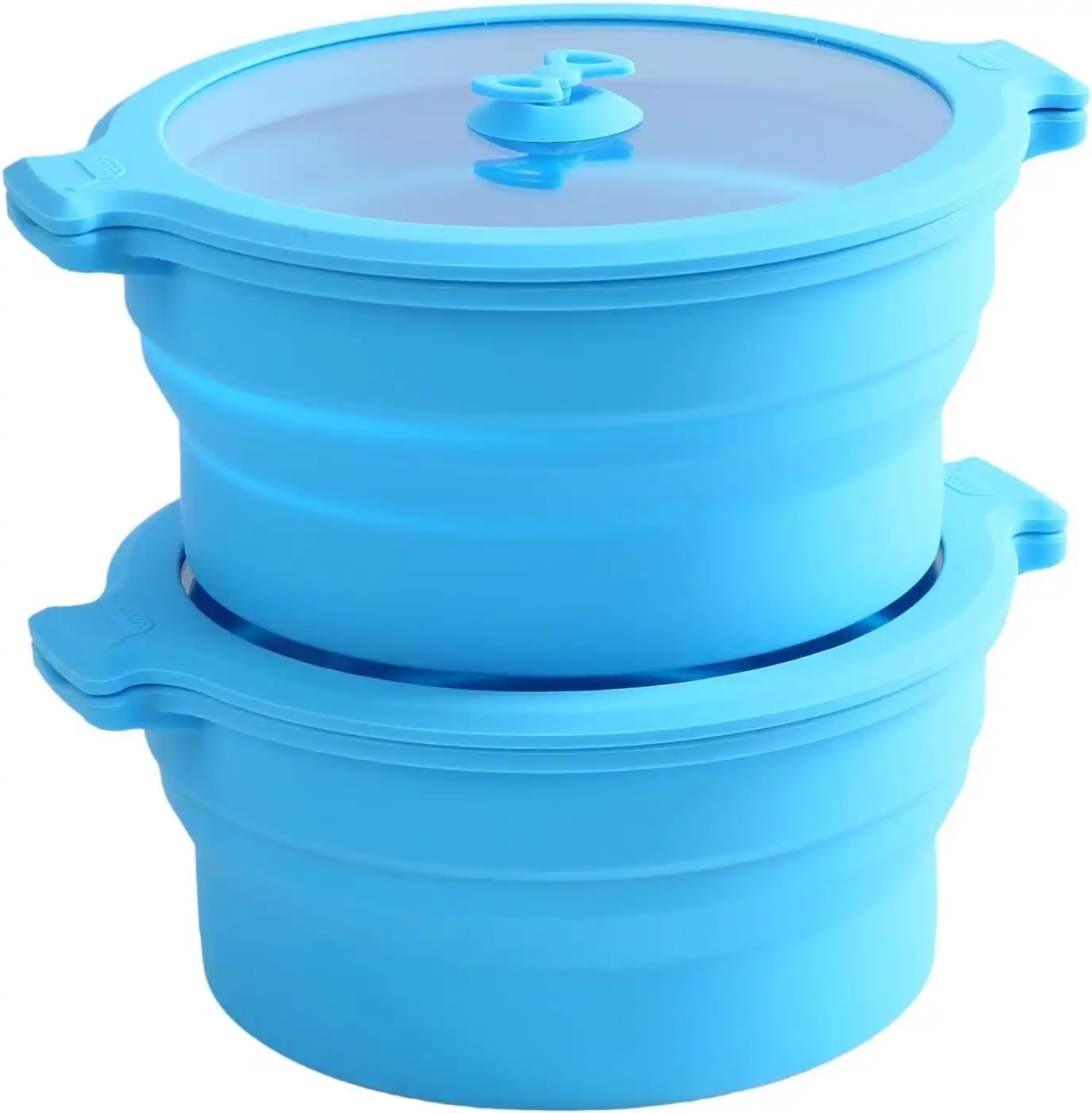
10.1 Advantages of Silicone Types of Cooking Pots
Silicone pots are a relatively new addition to the market and have gained popularity for their unique properties. One of the main advantages of silicone pots is their flexibility and non-stick nature. The flexible silicone material allows for easy removal of food without the need for excessive oil or butter. This makes cooking and cleaning up a breeze. Silicone pots are also microwave safe, making them convenient for reheating leftovers or cooking quick meals.
Another advantage of silicone pots is their excellent heat resistance. They can withstand high temperatures without melting or warping, making them suitable for various cooking methods, including stovetop, oven, and even freezer. Silicone pots are also lightweight and easy to handle, even when filled with food.
Silicone pots are highly durable and long-lasting. They are resistant to stains, odors, scratches, and dents, making them a low-maintenance option for your kitchen. They can be easily cleaned by hand with warm soapy water or placed in the dishwasher for hassle-free cleaning.
10.2 Disadvantages of Silicone Pots
One of the main disadvantages of silicone pots is their poor heat conduction. Silicone does not conduct heat as efficiently as other materials, such as stainless steel or copper. This means that silicone pots may take longer to heat up and may not brown or sear food as effectively as pots made of other materials. However, once heated, silicone pots retain heat well.
Another disadvantage is that silicone pots are not suitable for all cooking methods. They may not be ideal for high-temperature cooking or direct exposure to an open flame. It is important to check the manufacturer’s instructions for the recommended temperature limits and usage guidelines.
Furthermore, silicone pots may not provide the same traditional cooking experience as pots made of other materials. Some people prefer the feel and texture of traditional pots and pans when cooking. Silicone pots may not offer the same tactile experience, especially when it comes to sautéing or stirring ingredients.
In conclusion, there are various types of cooking pots available, each with its own advantages and disadvantages. Stainless steel pots offer durability and versatility, while non-stick pots provide convenience and require less oil for cooking. Cast iron pots excel in heat retention and durability, but require regular seasoning and maintenance. Aluminum pots are affordable and efficient heat conductors, while copper pots offer exceptional heat conductivity and aesthetic appeal.
Ceramic pots are non-reactive and visually appealing, while glass pots allow for easy monitoring of the cooking process. Enamel pots are durable and non-reactive, while clay pots retain moisture and enhance flavors. Lastly, silicone pots offer flexibility and non-stick properties, but may not provide the same cooking experience as traditional pots. Consider your cooking needs and preferences when choosing the best pots for your kitchen.



